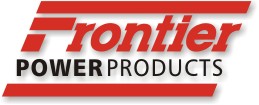Engine Maintenance
Service > Engine Maintenance

Engine MaintenanceService > Engine Maintenance |
 |
|||||||
|
|
||||||||
|
Use Low Silicate Antifreeze in Heavy Duty
Diesel Engines |
Related Pages |
Many people think that all cooling system antifreeze products are the
same, except some are methanol based and some are glycol based. Not so! In
newer automotive applications, silicates are needed to protect aluminum
engine parts and radiators from corrosion, and are used in virtually all
antifreeze mixtures in varying forms and amounts.
Eventually,
silicates are supposed to drop out of the coolant mix, and as long as they do
so at a controlled rate, they work quite well. However, over time, the "soup"
of chemicals, impurities, and corrosion by-products in a cooling system can
start to behave in ways difficult to analyze or predict. When silicates begin
to drop out too rapidly, they build up and form a gel.
A number of
things can start this process: high silicate levels from incorrect antifreeze
concentrations or improper use of coolant additives, impurities in very hard
water, and severe engine temperature swings.
The main effects of the
formation of this silicate gel are clogging of radiator and heater cores, and
engine overheating. Silicate gel buildup greatly reduces heat transfer from the
engine castings to the coolant. When the gel coats the temperature sender,
engine overheating can take place without notice. Silicate gel also carriers
abrasive particles to the water pump, where it wears away pump seals causing
leakage and failure.
Unfortunately, there are few effective methods
for cleaning the gel from an already-clogged system. Radiators must be removed
and sent out for a thorough cleaning. The engine must be flushed with a caustic
solution. The gel is not water soluble, so flushing with water alone will not
work.
John Deere offers a Low Silicate Antifreeze, part number
TY26575,
designed for use in heavy-duty engine applications that will avoid the gel
problem.
Problems & questions | Print | Home | Products | Service | Library | Contact | Links | Sign in | Search